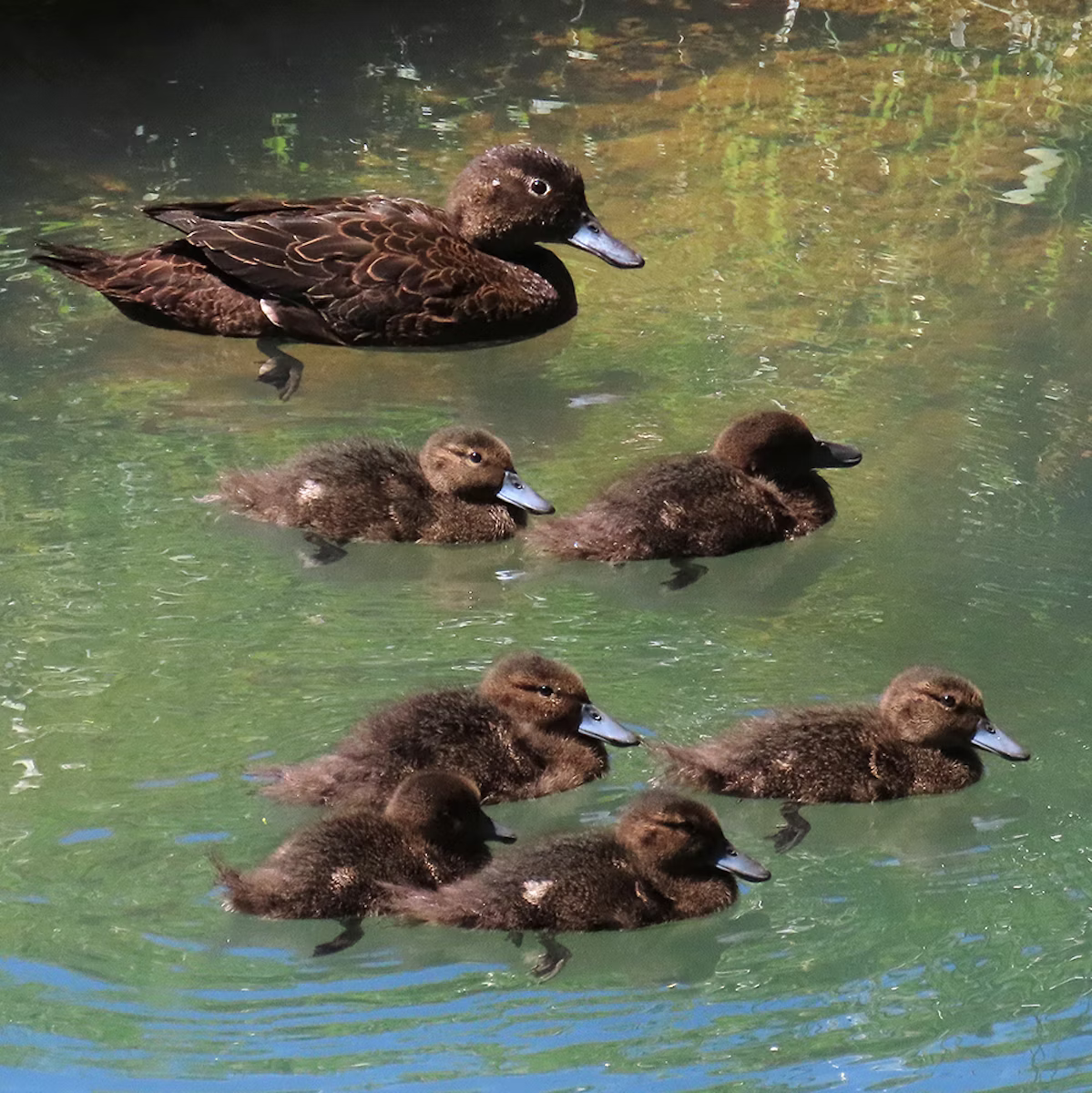Did you know? Pāteke
Pāteke, also known as the brown teal (Anas chlorotis), are small, secretive dabbling ducks found only in Aotearoa. They're mostly active at night, often foraging along streams, wetlands and tidal flats. If you’re lucky, you might even spot one using its distinctive “jackhammer” feeding style to dig up tiny shellfish and other snacks.
Aotea is one of the last places where pāteke survive in the wild. That’s partly because we don’t have mustelids like stoats or ferrets here—but other predators still pose a risk. Feral cats, rats, pūkeko, harrier hawks, and off-leash dogs are all threats to these vulnerable little birds. On Aotea, traffic is also a serious concern—roadkill is sadly a common cause of death for pāteke, especially in areas where roads run close to wetland habitats.
Pāteke are surprisingly adaptable when it comes to food. They eat a bit of everything—plants, fungi, insects, worms, and aquatic life—and are happy in a range of habitats, from wetlands and estuaries to paddocks and ponds.
Each year, locals help carry out pāteke flock counts, offering valuable insight into how the population is doing. In early 2024, 665 birds were recorded—an encouraging result, even though the count doesn’t catch every individual on the island.
Despite decades of predator control, pāteke numbers on Aotea have only increased slightly since the early 2000s. This suggests that while trapping is vital, other factors like habitat quality and food supply might be just as important for helping them thrive.
And there’s still cause for concern. A recent study from the Cawthron Institute warned there’s a 46% chance pāteke could vanish entirely from Aotea within the next 100 years if nothing changes. Even more sobering: there’s a 99% chance the population could drop below 50 birds without further action.
Protecting pāteke on Aotea is a challenge—but it’s one we’re already rising to. Thanks to local care, volunteer efforts, and ongoing predator control, these special birds still have a real chance at survival. Small actions add up. Predator control, habitat restoration, and monitoring all contribute to giving pāteke a fighting chance. With continued community support and smart conservation, Aotea can remain a stronghold for pāteke for generations to come.

